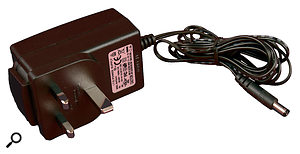I often read in your gear reviews that you don't like 'wall-warts' and that good power supplies should feature a toroidal transformer. What's wrong with 'wall‑warts' or in‑line lumps? Is it just convenience and the tangle of cables and plugs that concerns you, or is there a performance reason? And why is a toroid any better than any other power transformer? I've got different bits of gear that use different PSUs like this and they all seem to work!
Dylan Ashfield via email
SOS Technical Editor Hugh Robjohns replies: You're absolutely right, I don't like wall‑wart power supplies, but I don't think I've ever advocated total exclusivity for toroidal transformers!
The problem with wall‑wart supplies, for me, is mainly a practical one. They easily become divorced from the product to which they belong, and it's often difficult to match up the correct wall‑wart with the correct product if you have a multitude of wall‑wart-powered units. Then there's the problem of plugging them in: most are larger than a normal 13A plug top, meaning that adjacent sockets become unusable. They are also often quite heavy and can work loose from vertical sockets. 'In‑line lumps' aren't ideal, either, but they are usually a little more manageable than wall‑warts. The worst thing about wall‑warts is that they are cumbersome. However, they are sometimes a necessity — for example, in the case of sensitive equipment that could suffer interference from transformers.
The worst thing about wall‑warts is that they are cumbersome. However, they are sometimes a necessity — for example, in the case of sensitive equipment that could suffer interference from transformers.
From a practical perspective, I much prefer products that have built‑in mains power supplies, so that the only power connection is a standard IEC cable. It's far easier to manage, easy to carry spare cables, and much neater to install. However, I recognise that an external power unit is sometimes a necessity, such as in the case of sensitive mic preamps, for example (especially those with input and output transformers), where the inclusion of a mains transformer in the box can seriously degrade the performance through magnetically induced mains hums.
As for the type of power supply, linear supplies with large tranformers are relatively simple to engineer, and these often employ toroidal transformers because they are more compact and radiate a smaller external magnetic field than most laminated-core types. The down side is that linear power supplies are generally heavy, relatively large, and potentially quite inefficient. 'Switched mode' (SMPS) or 'universal' power supplies are far more complicated to design, but are small, lightweight, can cope with a wide range of input supply voltages, and can generate an array of precisely controlled output voltages. They also have negligible external magnetic fields, making them well suited for use in sensitive equipment like mic preamps!
As you say, a well‑designed power supply does what it says on the box, regardless of the specific technology used, but I think quality, reliability and user convenience should come above cheapness in the list of priorities!
